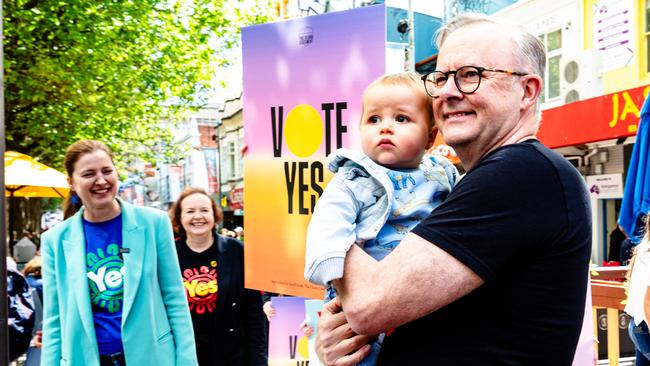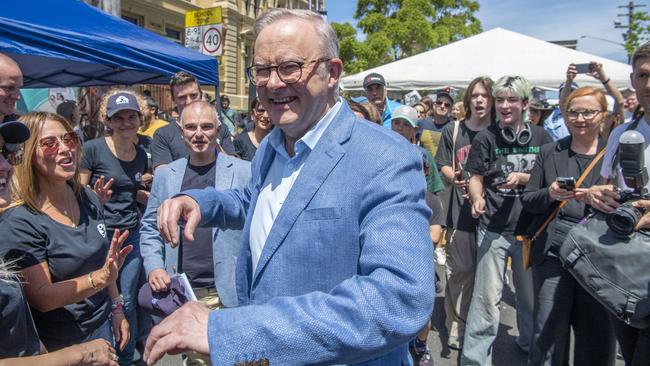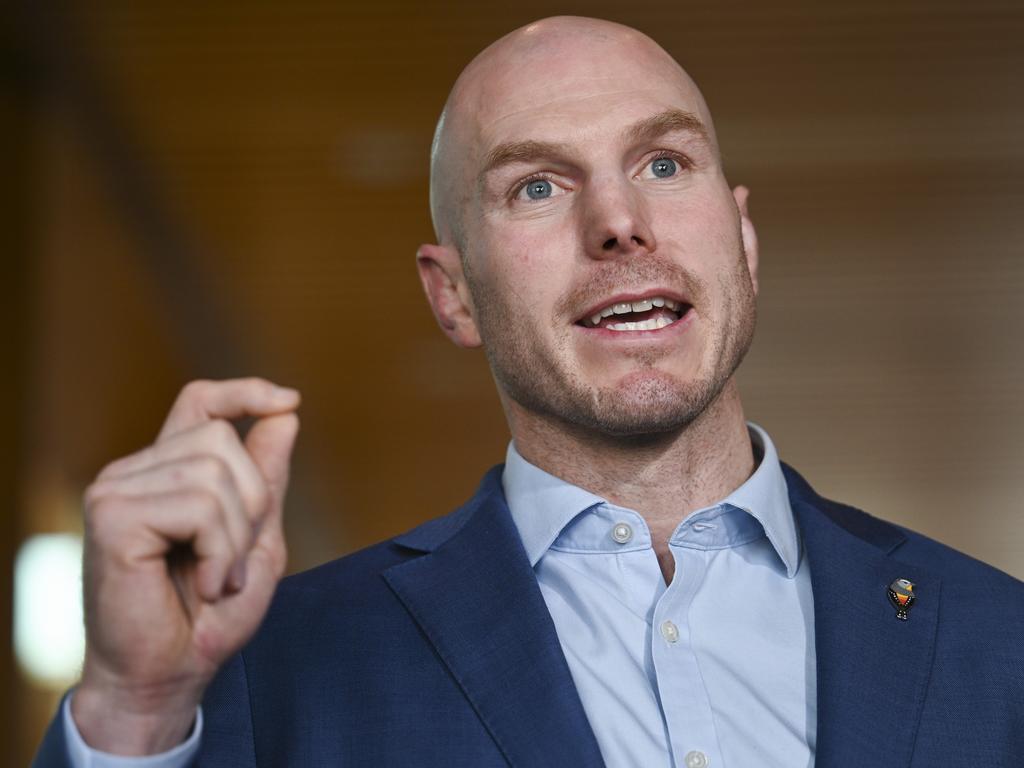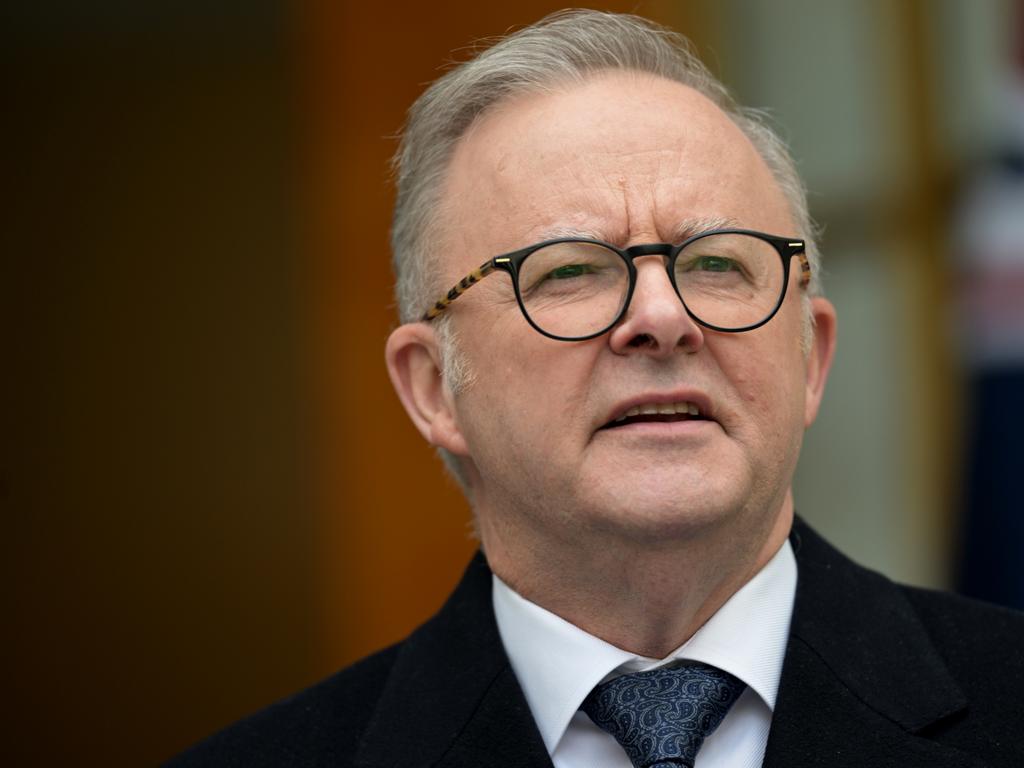Albanese government’s ad campaign spend surges by one-third
As the election nears, Labor is ramping up its taxpayer-funded sales pitch to voters on the cost of living and health.

The Albanese government is on a messaging blitz, increasing by one-third media spending on advertising campaigns last financial year, to spruik the revamped stage three tax cuts, cost-of-living relief for families, and failed referendum for an Indigenous voice.
According to the Department of Finance, Canberra’s departments and non-corporate agencies spent $174m on online, TV, radio, outdoor and print placement for the government’s advertising campaigns in 2023-24.
It was the highest ever annual media outlay by a federal government in a year that did not include an election campaign.
Now, with a federal poll due by May and a budget likely to be delivered in March, Labor is ramping up its taxpayer-funded advertising spree on voters’ key hip-pocket concerns, including energy bills, health and medicine costs, aged care quality, education fees, and financial scams.
Labor will also be activating voter information drives on the transition to the net-zero economy and its signature $22.7bn Future Made in Australia initiative.
Treasury has engaged creative agency The Monkeys at a contract cost of $3.2m to develop “an integrated advertising campaign aimed at building awareness of the objectives and benefits” of the industrial program Jim Chalmers once described as “in lots of ways the Prime Minister’s reason for being”.
In 2022-23, Labor’s first full year in office, campaign media spending was $131m, a 45 per cent fall on the Morrison government record annual outlay of $240m in the lead-up to the May 2022 poll.
The latest figures from the Finance Department’s annual report do not include creative, research and development costs, which typically add another one-third to the total cost borne by taxpayers, and are usually reported in December each year in consolidated accounts.
According to contract disclosures on Austender, Treasury has purchased $9.4m in media placement over coming months for the Supporting Australians campaign, with a focus on energy bill relief and changes to student loans.

The Department of Health and Ageing is spending $5m on media to promote the availability of 60-day prescriptions on the Pharmaceutical Benefits Scheme, $2.6m for a Star Ratings system to compare the quality of aged care providers, and $7.4m on a new phase of the youth vaping education campaign.
As well, there’s $3m for the second phase of the fee-free TAFE campaign and a new $5m initiative by the Australian Competition & Consumer Commission to raise consumer awareness about how to spot and avoid scams.
Voter research continues to show cost of living as the most pressing issue for government action, especially among those aged 35 to 54 raising children and paying off a home, and all renters, with health, hospitals and aged care prominent concerns for older Australians.
Digital platforms, such as Google and Meta, attract the bulk of federal advertising dollars, with their share now greater than the combined total for TV, radio and print media.
The Albanese government is seeking to regulate the tech giants through its Misinformation and Disinformation Bill and possibly ban children from social media applications, as some state governments are contemplating.
Across the federal government sphere, including corporate entities, the total media spend on non-campaign advertising (such as recruitment) and campaign advertising was $209m in 2023-24.
Last financial year, Labor launched campaigns to promote elements of its cost-of-living relief package for households, Medicare urgent care clinics, fee-free TAFE, child safety, elevating the teaching profession and the voice referendum, which cost the Australian Electoral Commission $27m.
Incumbent governments usually hold their advertising firepower until the 12 months leading up to a federal election.
The Albanese government has launched the Stop it at the Start consent campaign, as well as initiatives to promote cheaper medicines, youth vaping education, and childhood immunisation.
The May budget revealed Treasury would be spending $40m to inform 13.6 million workers about $23bn in tax cuts flowing into their pay packets this financial year.
Ahead of the July 1 start date for the tax cut, Treasury spent $18m on media and another $3m on creative services and market research. As well, another $36m campaign is set to promote what Finance Minister Katy Gallagher has called the “big economic transformation happening across the country” from Labor’s Future Made in Australia program.

To manage these two large campaigns, Treasury has created a temporary unit known as the Public Information Branch.
The unit, described by the Coalition as “Orwellian”, is likely to grow to employ 16 to 20 public servants, with the top hires having “previous government campaign experience”, according to the bureaucrat in charge.
Treasury’s chief operating officer, Angela Barrett, told Senate estimates in June that when the tax cuts campaign was being developed, the original research revealed that “while 50 per cent of Australians had heard something about tax cuts, only 4 per cent knew that everybody would receive a tax cut”.
Grattan Institute analysis shows about a quarter of government spending on advertising is politicised in some way, by both sides of politics. Historically, about $50m on average each year has been spent on campaigns that are politicised, the institute found.
The Australian National Audit Office this year instituted a performance audit of government advertising over the three years from November 2021 to next month to assess the effectiveness of the Finance Department’s implementation of a new campaign advertising framework the Albanese government established at the end of 2022.
The five overarching principles require that campaigns are: relevant to government responsibilities; presented in an objective, fair and accessible manner; objective and not directed at promoting party political interests; justified and undertaken in an efficient, effective and relevant manner, and; compliant with legal requirements and procurement policies.







To join the conversation, please log in. Don't have an account? Register
Join the conversation, you are commenting as Logout